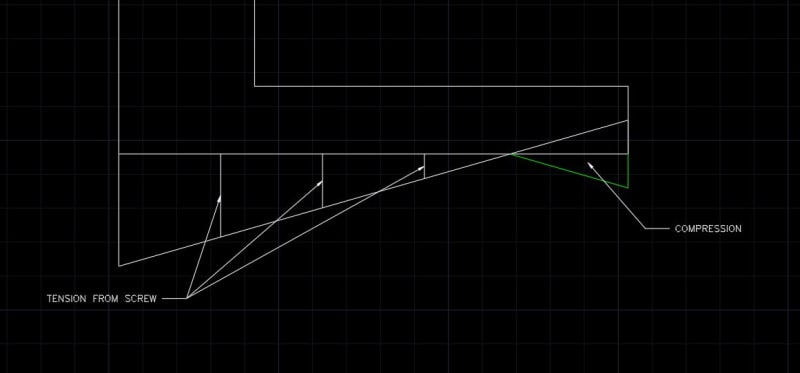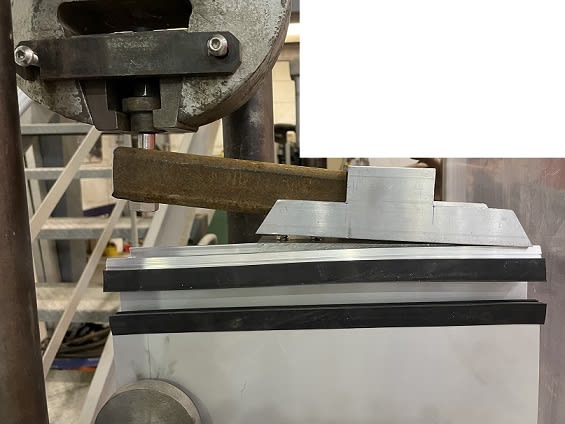GastonLagaffe
Structural
I have been tasked with designing sunshades for an aluminum curtain wall. While everything seemed fine at first, some last minute changes now have me questioning my judgement and I'd like to ask your opinion on this.
The sunshades are connected to an aluminum bracket that screws into the curtain wall mullion's screw chase. The screws are 1/4" dia. stainless steel. I've calculated the capacity (factored) of the screws, governed by pullout from the chase, as 335 lb using the ADM. My concern is due to some detailing requirements, I can't have the bracket be nice and symmetrical and I'm left with this:

The 400lb load is also factored. My concern is that the interaction with the rubber gaskets, the glass, and the mullion may lead to some unconservative assumptions. I'm picturing the one screw at the top being ripped out before any of the other ones are engaged in tension and having the entire bracket basically zip away.
Or am I overthinking this and taking my neutral axis at the center of my 4 screws is fine?
Thanks and I hope this makes sense. I look forward to hearing your thoughts on this! As a long time lurker but only a recent participant to this community I feel very thankful to be able to post here
The sunshades are connected to an aluminum bracket that screws into the curtain wall mullion's screw chase. The screws are 1/4" dia. stainless steel. I've calculated the capacity (factored) of the screws, governed by pullout from the chase, as 335 lb using the ADM. My concern is due to some detailing requirements, I can't have the bracket be nice and symmetrical and I'm left with this:

The 400lb load is also factored. My concern is that the interaction with the rubber gaskets, the glass, and the mullion may lead to some unconservative assumptions. I'm picturing the one screw at the top being ripped out before any of the other ones are engaged in tension and having the entire bracket basically zip away.
Or am I overthinking this and taking my neutral axis at the center of my 4 screws is fine?
Thanks and I hope this makes sense. I look forward to hearing your thoughts on this! As a long time lurker but only a recent participant to this community I feel very thankful to be able to post here


